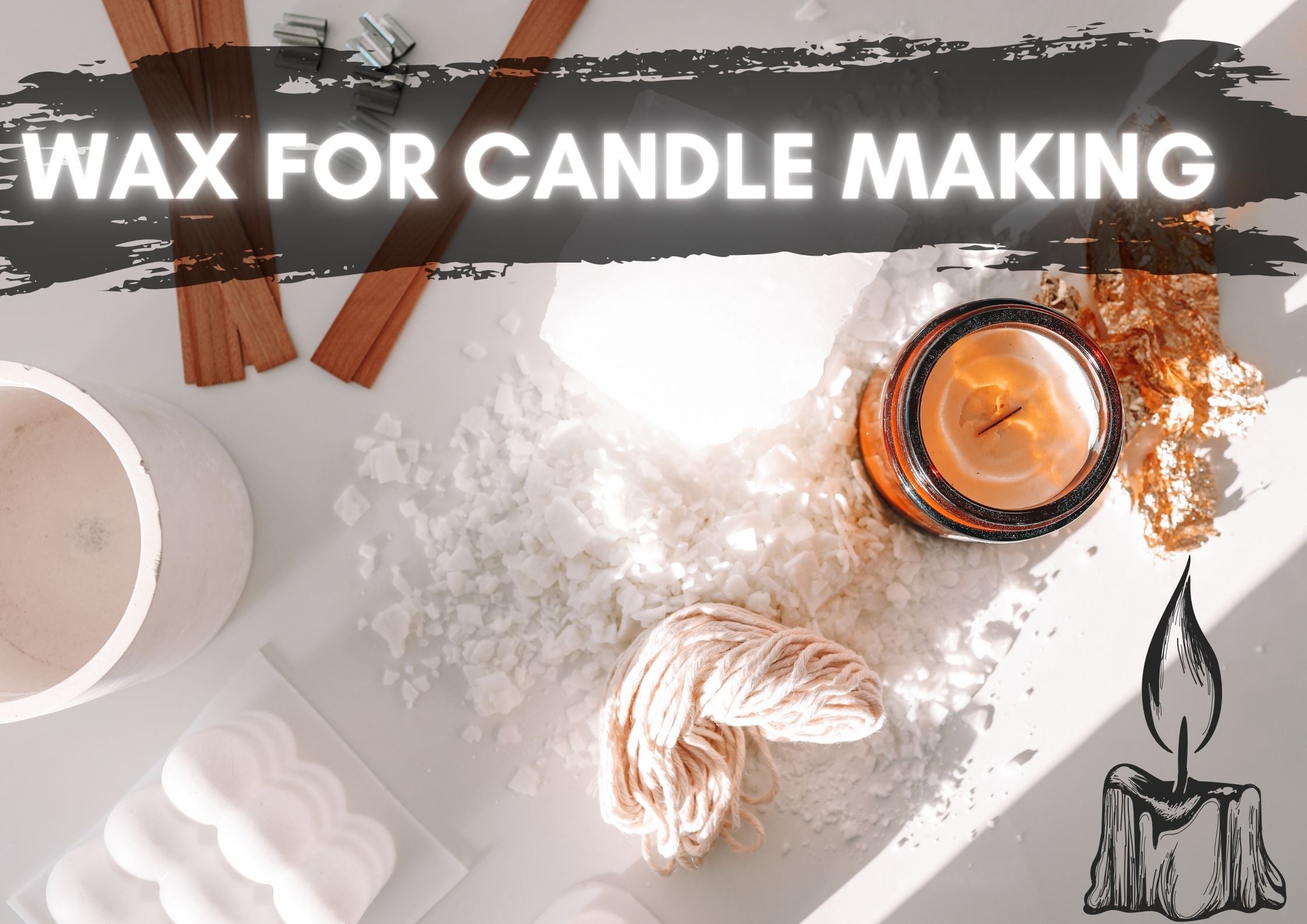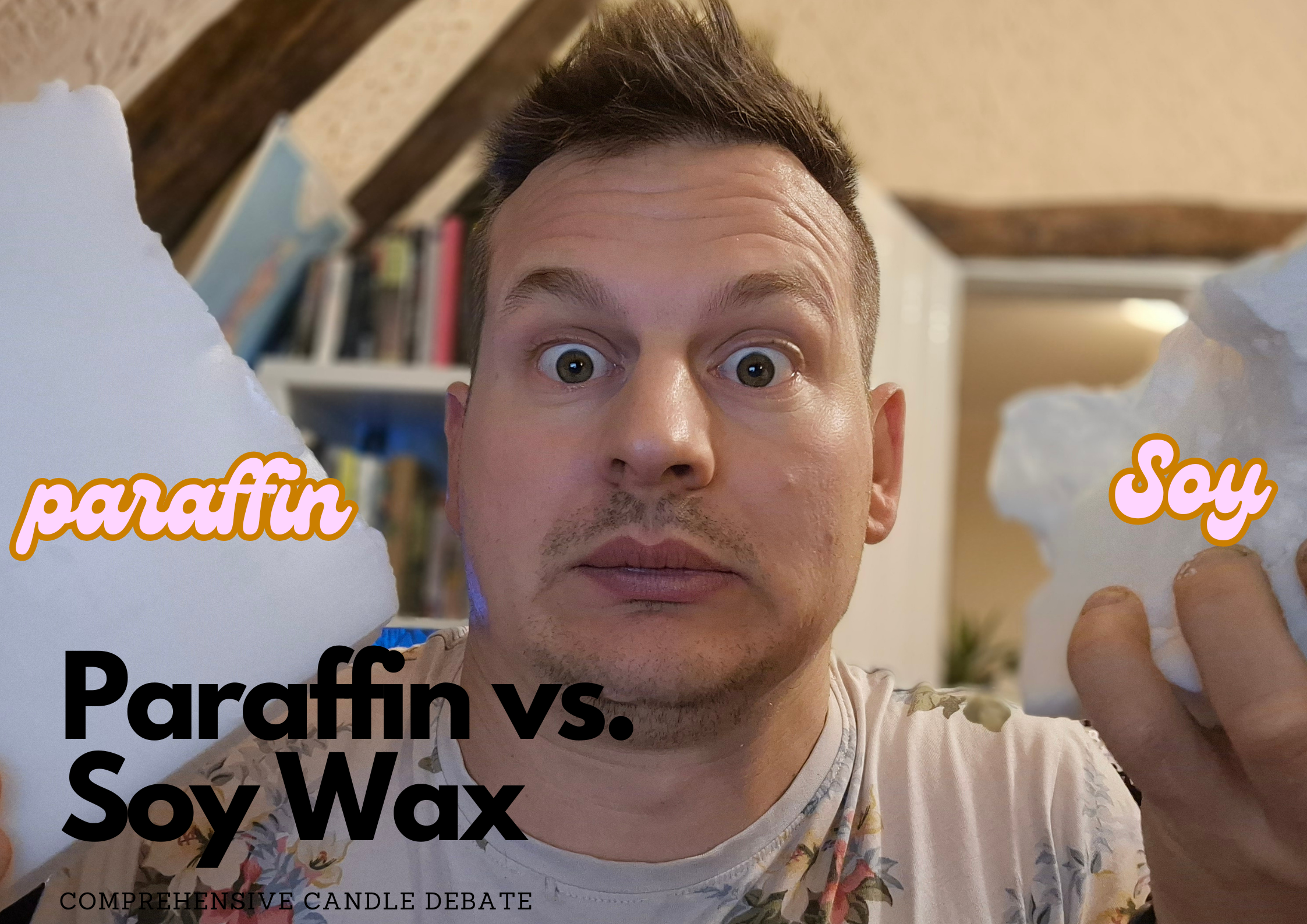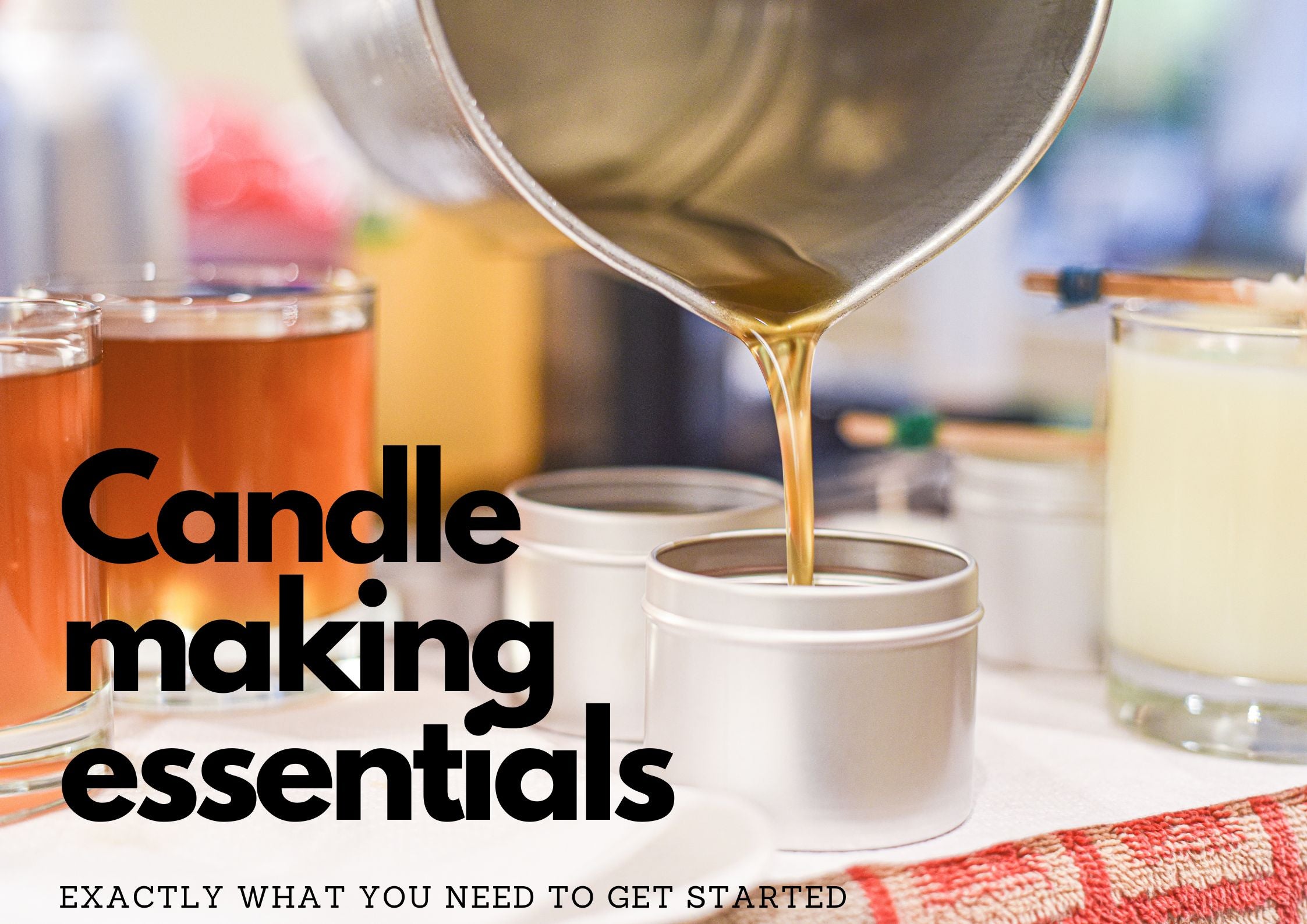Understanding wax for candle making
Sep 20 , 2023
Understanding wax for candle making
In the beginning candle wax was mind blowing, I didn’t know where to start, brands, types, it literally blew my tiny mind. In my panic the first wax I purchased was pillar wax and I was trying to make container candles, low and behold it was rubbish.
Lesson learnt
So in this video I’ll go over common waxes such as soy wax - very popular amongst us candle makers, paraffin wax, beeswax, and coconut wax. I’ll explain the benefits and the negatives. I’ll also go over some of the popular soy wax blends I’ve had experience with and the current blend I’m using for the candles I sell.
Candle wax variations

Let’s get into the wax types:
Paraffin Wax
- Paraffin wax - This is probably the most commonly used candle wax in the world. Massive companies use it, some of the most well known ones you’ll see are using paraffin wax.
- This wax is a by-product of refined crude oil. A chemical process produces this oil-based petroleum by-product that is easily available and very cheap.
- There are health concerns with paraffin wax due to the soot and pollution the candle can produce.
- It can take a good scent load and the hot throw of paraffin wax is incredible, however it does have a faster burning time compared to soy wax.
Soy wax
- Soy wax - very common amongst candle makers due to its values; being eco friendly and biodegradable it fits in with a lot of modern customer avatars and it’s probably just a bit better for the planet.
- Due to being a natural product it’s much easier to clean up, generally speaking a damp cloth and a bit of elbow grease does the work.
- Candle burn time with soy wax is great, it burns slower than a lot of other waxes, thus providing more bang for your buck!
- Cost, it is more expensive than a lot of other waxes, some blends can break the bank.
- Scent load, it has good scent retention and offers a good hot and cold throw, perhaps not the best in the world compared to other waxes but it holds up strong. Most soy waxes hold around 8% fragrance load. If you'd like to know more about the best fragrances for soy wax check out this article.
Beeswax
- Beeswax - a great natural alternative, it provides a great scent throw and long lasting burn, beeswax also has a natural honey scent to it.
- Beeswax is very expensive.
- Personally I really struggled with beeswax, I loved the product and I loved what it had to offer, I just couldn’t wick it, it was a nightmare. It would constantly tunnel and my fear was I’d need such an oversized wick it would cause safety issues. The wax is very hard and requires a decent enough wick to get the burn pool to work properly, that was my experience trying to create container candles with beeswax.
- I also found it quite hard to pour, you had to pour it at the perfect temperature around 62 degrees otherwise it would tunnel and you’d get horrible glass adhesion.
Coconut Wax
- Coconut wax is up next a good eco friendly alternative, it has great scent throw, it’s really up there even with the likes of paraffin, it can take a very good amount of fragrance load up to 12 percent.
- Coconut wax is quite expensive and doesn’t perform so well without additives.
- Coconut wax is really easy to pour, temperatures don’t seem to matter so much when it comes to adding fragrance and pouring. From my experience anyway.
- It has a very low melting point, I tried using Kerax coconut wax and I had loads of issues with candles melting in transit.
My experience with Soy Wax brands

Now we’ve covered some commonly used candle wax types. Let's talk about the ones I’ve used and the ones I recommend.
For beginners, start with Soy wax C3 and just play around with it. It's fairly cheap entry level soy wax with great properties such as: good scent, throw hot and cold, good glass adhesion and smooth tops if poured at a low enough temperature. The biggest issue I had was with frosting. However this isn’t necessarily an issue if your containers aren’t see-through glass whereas mine were and I want that perfect glass adhesion.
Two other brands and wax types I’ve had success with are Golden Wax 464 a very common wax with great properties and an amazing scent throw. I really struggled with glass adhesion and frosting with this one. It can be mastered but I couldn’t get my head around it.
And Eco Soya CB advanced - this one is a little more costly but it you’re looking for a well rounded almost idiot proof wax this is the one, great scent throw, smooth tops every time, really good glass adhesion and no frosting. The only downside is burn time, for me it just burnt down too quickly compared to other waxes.
Which led to me trying C6 as I heard coconut wax has great scent throw so a hybrid blend of soy & coconut would be the dream, it made some of the best smelling candles I’ve ever made- however glass adhesion and frosting was a tricky, I could rarely get it to perform the way I wanted and boy did I try, the results were so good as a candle but aesthetically I just couldn’t make it work.
On my quest to make the best possible candles I stumbled across SCX wax by candle shack, which is a coconut soy wax blend. It has immaculate glass adhesion and I mean perfect, smooth tops every time if you pour it around 50 degrees and a banging hot and cold throw.
What’s even more impressive is the burn time, it lasts for ages, a really slow burn. It’s taken my previous burn time from around 45 hours to up to 60. The only problem I had with this wax was trying to wick it, prior to this I’ve always used TCR wicks and that was my first port of call, couldn’t get it to perform and I went through them all, stabilo, eco wicks, you name it I tried it. Eventually I gave the candle shack CL wicks ago and these were the ones, CL14 for my jar worked a treat.
This is the wax and the wick I use for all of the candles I sell. It’s just taken me time and effort to get here, simply not giving up and man did I want to. I stumbled into candle making thinking it would be easy, I was naïve.
This is my overview of commonly used waxes, specifically for container candles as this is what I have the most experience in. All of my views are subjective. I’m hoping you’ve found this helpful, if you have give it a like and share it!

FAQ: Common Questions About Candle Wax
Q1: What is the difference between paraffin and soy wax?
A1: Paraffin wax is derived from petroleum, making it a non-renewable resource, while soy wax is natural, eco-friendly, and biodegradable. Soy wax also has a slower burn time and is considered more environmentally friendly than paraffin wax.
Q2: Why is beeswax so expensive, and what are the challenges of using it in candle making?
A2: Beeswax is expensive because it is a natural product produced by bees. It offers a great scent throw and long-lasting burn, but it can be challenging to work with due to its hardness and wicking requirements. Proper wicking and pouring temperature are essential for successful beeswax candles.
Q3: What are the advantages of coconut wax in candle making?
A3: Coconut wax is an eco-friendly option with excellent scent throw capabilities. It can handle a high fragrance load, making it suitable for highly scented candles. However, it can be expensive and may require additives for optimal performance.
Q4: Can you recommend some soy wax brands for beginners?
A4: For beginners, consider starting with Soy wax C3, which is affordable and offers good scent throw, glass adhesion, and smooth tops. Other brands like Golden Wax 464 and Eco Soya CB Advanced are also popular choices, each with its unique properties.
Q5: What is the SCX wax by Candle Shack, and why do you recommend it?
A5: SCX wax is a coconut-soy wax blend offered by Candle Shack. It is known for its excellent glass adhesion, smooth candle tops, and impressive burn time. It combines the benefits of both soy and coconut waxes, making it a great choice for candle makers seeking a high-quality, versatile wax.
Q6: What wicks should I use with SCX wax from Candle Shack?
A6: When using SCX wax, the Candle Shack CL wicks, specifically CL14 for jar candles, are recommended for optimal performance. Finding the right wick for your wax is essential to ensure an even and efficient burn.
Q7: How long did it take you to perfect your candle-making process?
A7: Candle making can be a learning curve, and it took time and effort to find the right wax-wick combination and master the craft. Persistence is key, and experimenting with different materials and techniques is essential for success in candle making.
Q8: Can you make container candles with other types of wax besides soy and coconut?
A8: Yes, container candles can be made with various types of wax, including paraffin, beeswax, and palm wax. Each wax type has its unique properties, so it's essential to choose one that aligns with your candle-making goals and preferences.
Q9: What advice do you have for aspiring candle makers?
A9: My advice for aspiring candle makers is to start with a basic wax like Soy wax C3, experiment, and don't be discouraged by initial challenges. Research, try different waxes, wicks, and pouring techniques to find what works best for your candle-making style. Remember that candle making is both an art and a science, and patience is key to achieving beautiful and fragrant candles.
Q10: Is candle making easy for beginners?
A10: Candle making can be enjoyable but may come with a learning curve. Beginners should start with basic waxes and gradually build their skills. While it may not be "easy" at first, the process can become more straightforward with practice and a willingness to learn from both successes and mistakes.






